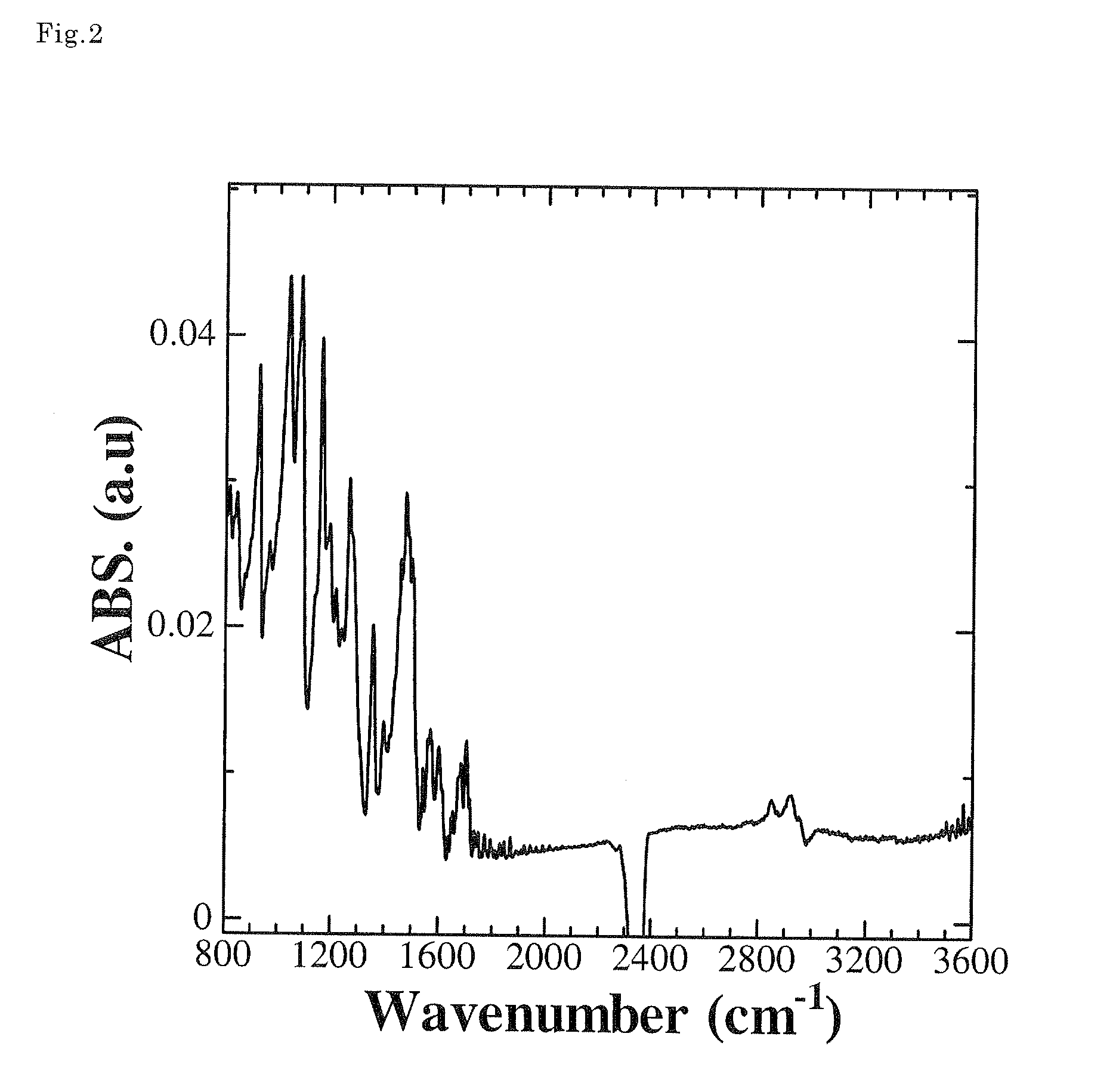Dye-sensitized solar cell, photoelectric conversion element, and dye for use in the solar cell and the element
a solar cell and dye technology, applied in the direction of metal/polymethine dyes, electrolytic capacitors, organic chemistry, etc., can solve the problems of dye energy transfer and loss of activity, and achieve the effect of easy association and easy energy transfer
- Summary
- Abstract
- Description
- Claims
- Application Information
AI Technical Summary
Benefits of technology
Problems solved by technology
Method used
Image
Examples
synthesis example 1
[0066]Carboxyindolenine was synthesized using 4-hydrazinobenzoic acid and methyl isopropyl ketone. 78.87 mmol of 4-hydrazinobenzoic acid, 160.92 mmol of sodium acetate, and 123.46 mmol of methyl isopropyl ketone were added to 180 ml of glacial acetic acid, and the mixture was subjected to a reaction under nitrogen at 120° C. for 7 hours. Acetic acid was distilled off and the resultant solid was dispersed in a solution of water:methanol=9:1 and filtered. The solid was added to 70 g of methanol and the mixture was heated to 30° C. and filtered. 160 g of water were added to the filtrate for crystallization and the crystal was filtrated. The resultant solid was washed with 35 ml of a solution of water:methanol=9:1 and dried in vacuum to afford 37.7 mmol of carboxyindolenine.
[0067]In order to synthesize an N-n-alkylcarboxyindolenine salt, 0.1 mol of 2,3,3-trimethyl-5-carboxy-indolenine and 1-iodooctane were dissolved in 20 ml of ethanol and the mixture was subjected to a reaction for 7 h...
synthesis examples 2 and 3
[0069]Squarylium dyes D-5 and D-6 were obtained in the same manner as in Synthesis Example 1 except that 1-iodododecane or 1-iodooctadecane was used instead of 1-iodooctane in the synthesis of the carboxyindolenine salt.
synthesis example 4
[0070]A squarylium dye D-1 was synthesized in the same manner as in Synthesis Example 1 except that carboxyindolenine was used as the carboxyindolenine salt.
PUM
| Property | Measurement | Unit |
|---|---|---|
| particle size | aaaaa | aaaaa |
| particle size | aaaaa | aaaaa |
| temperature | aaaaa | aaaaa |
Abstract
Description
Claims
Application Information
 Login to View More
Login to View More - R&D
- Intellectual Property
- Life Sciences
- Materials
- Tech Scout
- Unparalleled Data Quality
- Higher Quality Content
- 60% Fewer Hallucinations
Browse by: Latest US Patents, China's latest patents, Technical Efficacy Thesaurus, Application Domain, Technology Topic, Popular Technical Reports.
© 2025 PatSnap. All rights reserved.Legal|Privacy policy|Modern Slavery Act Transparency Statement|Sitemap|About US| Contact US: help@patsnap.com



